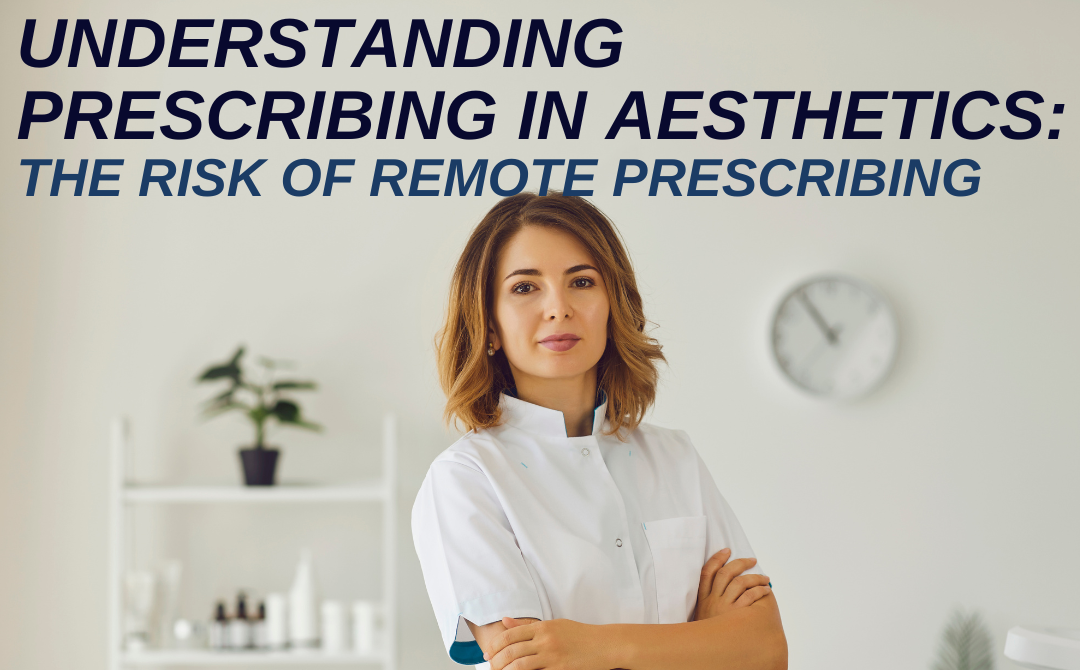When it comes to aesthetic treatments, few topics spark as much ongoing discussion as the issue of remote prescribing. Prescription-only medicines (POMs), such as botulinum toxin, require a valid prescription before they can be administered. With the latest update from the Nursing and Midwifery Council (NMC) released in April 2025, it’s essential that all professionals in the aesthetics industry understand the new standards and how they will impact practice going forward.
What is Remote Prescribing?
Remote prescribing refers to the practice of issuing prescriptions without an in-person consultation, often via phone or video call. In the past, this practice was not uncommon in the aesthetics sector, but concerns about patient safety led to its prohibition by multiple professional regulators.
In 2012, the General Medical Council (GMC) banned remote prescribing for aesthetic procedures, a stance that has since been upheld by the General Dental Council (GDC), the General Pharmaceutical Council (GPhC), and the Nursing and Midwifery Council (NMC). This included injectables (such as botulinum toxins), topical and oral medications, and emergency medicines like Hyalase.
The NMC’s New Position (Effective 1 June 2025)
From 1st June 2025, all nursing and midwifery prescribers must carry out face-to-face consultations before prescribing non-surgical cosmetic medicines.
This update applies to prescriptions for:
• Botulinum toxin injections
• Local anaesthetics (injected or topical)
• Topical adrenaline
• Weight loss treatments
• Kenalog (for hay fever or dermatological use)
• Emergency aesthetic medications such as Hyalase
What Does This Mean for Non-Prescribers?
If you are a medical professional who does not hold a prescribing qualification, you can still train in and perform procedures involving prescription-only medicines—but every patient must be seen face-to-face by a qualified prescriber prior to treatment. Remote prescribing, even via video or phone call, is no longer compliant with the NMC’s position as of June 2025.
Consequences of Remote Prescribing
If prescribers are found to have engaged in remote prescribing for cosmetic procedures such as via a video or phone call, they are liable to be called before their governing body’s Fitness to Practice Committee to judge the potential risk they may pose to public safety.
Consequences may include:
- A formal caution
- Temporary suspension
- Being struck off from professional registration
The same consequences apply to those accepting and administering prescriptions from remote consultations, they risk compromising patient safety and their professional standing.
Furthermore, insurance providers require full compliance with regulatory and legal prescribing requirements. If a treatment claim arises and proper procedures were not followed, the practitioner may find their policy invalid, leaving them personally liable for any costs or claims.
Don’t Risk It – Face-to-Face It!
As the aesthetics industry continues to evolve, patient safety must always remain the top priority. By ensuring that all consultations are carried out in person, practitioners can:
- Fully assess a patient’s medical history
- Ensure overall suitability for treatment
- Identify contraindications and avoid adverse reactions
- Offer appropriate and safe aftercare advice
- Maintain trust and confidence in the profession
Practitioners should not be complicit and accept ‘remote’ prescriptions from their prescribers.
As a business, we fully support the NMC’s updated position on in-person consultations for aesthetic prescriptions. We believe this change is a positive step toward raising industry standards, accountability, and safeguarding the wellbeing of clients.
Need Guidance?
If you’re unsure about how the new NMC guidance affects your practice or business, now is the time to review your procedures. Please get in touch with us via email [email protected] or phone on 0121 3842 717.
If you are a practitioner seeking a prescriber, please visit complete our Prescriber Enquiry form today.

